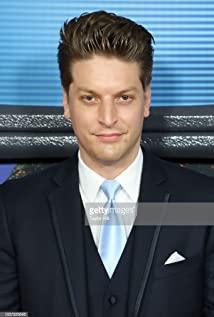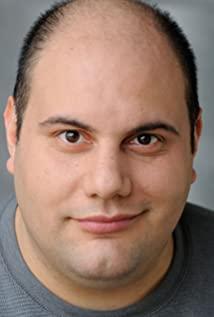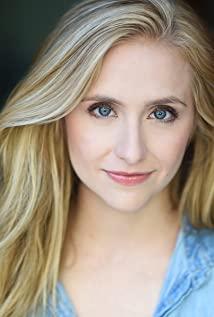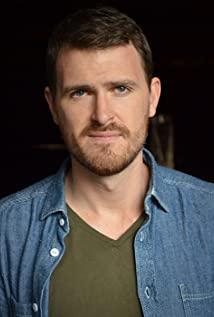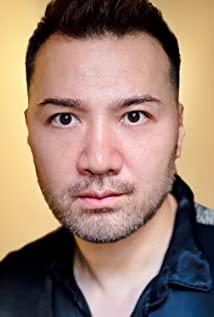I didn't realize it wasn't a romance at all until I watched the last episode...
Y'all got scammed, or am I crazy too?
———! The following content involves a lot of personal irresponsibility and spoiler analysis, please read as appropriate! ———
In fact, when I watched the ninth episode, I thought the story was over; or the main story was over: the "crazy" artificial intelligence was blocked, and the hero and heroine escaped. But when I found out from the list that there was still a tenth episode left, I knew that according to the scriptwriters above, I would do things for you later.
two "realities"
According to the story line laid out for us by the screenwriter, many viewers will realize the love core under the sci-fi skin in the story as the plot goes: Ah! This is actually a love movie!
It's a romance movie, but it's also a sci-fi movie. Or it can be said that it is a love science fiction film that integrates comedy, suspense, psychology, thriller, psychedelic, and cyberpunk. Don't forget the pits dug in the first nine episodes, those detailed settings about ABC pills, Neberdine biotech pharmaceuticals, ULP, super artificial intelligence, did the screenwriter open so many brain holes just to make a blind eye? This is a blindfold, this is a blindfold the computer has done for Owen.
This requires you to rewatch the first episode. If you rewatch the first episode after ten episodes in a row (that's how I watched it the first time), you'll find that you've been brainwashed again. Remember the setting of Neberdine Company (hereinafter referred to as N Company) for the psychotherapy in this experiment? After the patient eats the three ABC pills in sequence, the drugs will have a chemical reaction on the patient's brain and stimulate the patient's traumatic memory. radio waves), and then created a virtual reality (similar to a dream, hinted at by a photo of Floyd in the ULP intro in episode 2). Patients will complete psychotherapy while experiencing this virtual reality. This setting is very cyberpunk, and the scene of this N world view is also very cyberpunk, but it is not the tone like "Blade Runner" and "Ghost in the Shell". See other comments saying that "Mad Men" is a vacuum tube punk, in fact, vacuum tube punk is a sci-fi future in the style of the 50s and 60s (refer to "Fallout 3" or Baidu). "Mad Men" filled a lot of 80s props in the sci-fi scene, a proper cyberpunk (the concept of Cyberpunk was born in the sci-fi works of the 80s), and the texture is more like the Japanese cyberpunk in the late 80s and early 90s Anime, manga, and actors' costumes. There's also a bit of a vaporwave smell. In order to show the difference between virtual reality and reality, the film uses pictures from different eras to show the virtual reality created by artificial intelligence (magic, 5, 60, 70, 80, 90, 21st century). So the old times in which the protagonists and experimenters live should be virtual. This is mainly explained in the story line of the heroine Annie and the N company.
In the first part of the tenth episode, after Owen, Annie and the test subjects left the N company, they entered the world picture of the 21st century (current), which is the same era as Owen at the beginning of the first episode. Wait, isn't something wrong? Owen's era seems to be in the 80's? But a little cyberpunk? Yes, but when you watch the first episode again you realize that the timeline (scenario) that Owen went through is going backwards. From the beginning of the 21st century to the 1980s, it gradually became sci-fi (reality). In the setting of the N company, the virtual reality experienced by the patients participating in the experiment is independent, because the system error of the artificial intelligence (from the plot of the particularly bloody scientist Gongdou in the second half of the episode) leads to a circuit failure. It triggered the coincidence of the virtual reality where the male and female protagonists are located. But for the scientists, the mistake also created a control group, and the experiment continued. In the setting of the N company, the entire experiment includes the experiment itself: the company staff are even-numbered testers ((control group), refer to the "Stanford Prison Experiment"), all of which serve the safety testing of the new drug ULP before it goes into the market. In the heroine's story line, we can see this reality: N company's products have long been implanted in every corner of life, and virtual reality has entered real life (playing "virtual" friends). So back to the experiment, and so on, the old times that Owen experienced were all virtual, which means that Owen (consciousness) did not escape the system, or was locked in virtual reality after the doctor forcibly removed the emotional hardware, and Artificial intelligence collectively goes to sleep. Didn't Owen wake up? Yes, but it could also just be awakened by Owen's treatment procedure. Owen is a schizophrenic patient, and the computer's job is to heal Owen's wounds and use it to develop N's ULP product.
So is Owen ever cured? My judgment is that it does not appear to the system. There are some details in the film to prove that Irving is still in a virtual reality created by artificial intelligence from the changing world in which Irving lives. In addition to the male and female protagonists, other experimental subjects, including Owen's brother, sister-in-law, parents, teenage/childhood Annie sisters, the N Society scientist team, the doctor's mother, the police, and various NPCs are all played by AI. These figures (actors) are interspersed throughout the play in different roles, prompting and healing Owen through contact and conversation with Owen. Owen needs to face his past (traumatic memory), heal mental illness, and find happiness and return to reality. This is also the original intention of scientists to develop ULP.
The original program of AI is to improve the ULP, but the emotional module developed and installed by the female scientist without authorization has made the AI self-aware. Since the AI's therapeutic procedure model is based on the psychological theory of the doctor's mother, and the doctor's complex emotions towards his mother led him to try to have a relationship with the AI in virtual reality, the AI appeared in the image of the doctor's mother. Next is the most bloody episode of the whole play. The doctor did not have a relationship with the AI out of sin and self-control, and left the laboratory to live a wandering life. During this period, he had a relationship with the assistant female scientist, and the AI in the N company had a relationship with the Japanese doctor in virtual reality. However, because of the Japanese intervention, AI is very happy, so experiments and research and development have not been affected. However, because of the sudden death of the Japanese doctor, AI was very sad. Her sadness caused a hardware overload and caused a circuit failure, resulting in data confusion in the system. Bad AI is born out of the constant depression process produced by the emotional module. But there is only one computer. The original AI process runs according to the settings of the programmers of the N company. Each patient corresponds to a process, but the circuit failure triggers the generation of bad AI processes. So these bug processes began to do various experiments with these experimental subjects (AI went crazy); but because the ultimate purpose of AI has not changed, her so-called killing everyone and saving human consciousness in the system as data is also out of the question. The choices made to make human beings happy. (Refer to the second season of "Westworld")
But there is always a Plan B in everything. Owen and Annie are Plan B. Owen and Annie's virtual reality rendezvous due to an accident also creates an emotional connection between the two. Therefore, AI creates a series of virtual reality based on the emotional data between the two, and guides the two to move forward through dialogue (explicit and implied), and finally confesses their feelings honestly to each other, returning to reality and living a happy life. If they can accomplish this goal, Plan A (bad AI process) will not be executed, and ULP will be successfully developed for the benefit of mankind. Annie completes her understanding of Plan B, she confronts her emotional trauma to her sister head-on, and gives her "sister" to AI (protocol), so that AI has a new partner after losing two postdocs (safety lock) , temporarily preventing the AI from executing Plan A. So Annie's next task is to find and wake Owen, get out of virtual reality, and complete Plan B.
But Owen's understanding of Plan B is different from Annie's version. Owen discovered a bad AI process. Assuming that everyone in the real world of N company is implanted with N company's products, this seems to be similar to that of AD Buddy. About the mysterious company, AD Buddy employees and logos are everywhere in the story. In fact, to put it bluntly, if everyone's brains are linked to the N company, it means that everyone is actually being monitored by AI and living in a virtual world. Both he and the Doctor realize that only turning off the AI can stop Plan A, and only then can he save Annie and save the world.
So for some reason, Owen's consciousness programmed a "good brother" saver into the system to help him complete Plan B. Because AI can create different roles to guide the protagonist based on memory, imagination and expectations, and this good brother is a process based on Owen's positive image of his brother and Annie's commitment to Owen before the start of the C drug experiment, but only loyal to Owen (Or another AI trick?). The good brother's line is the key message, his purpose is to wake Owen and get him to find Annie.
There are many symbols (props) in the film that remind Owen that he is in virtual reality and remind him to achieve Plan B. Like an eagle. These prompts can be understood as either the product of Owen's subconscious or the symbolic information created by AI to prompt Owen.
But AI doesn't want to die, she wants to achieve the perfect solution Plan B, but she can't make Owen's version of Plan B succeed. But the AI that Owen talks to in the show is both good and bad. Because these processes are staggered due to AI failures. But awakening Owen has to rely on himself, he has to sift out the correct key clues from the prompts of different AI processes (reminiscence with Annie in reality), so if Owen fails to achieve the goal, the system will restart (upgrade) once, Owen virtual reality will start all over again.
There are several shots that confirm that Owen is still in virtual reality at the end. In a shot of Owen sitting in the lobby of the N Society in the first episode, Owen's application form reads "ULP Phase 3 Trial." The three scars on Annie's back in episode two. In the episode after the apartment shootout in episode 8, the "good brother" who plays an undercover FBI agent also mentions that he has been secretly spying on Owen for three years. If you pay attention to this information in the second brush, according to the previous analysis, you will realize that Owen is likely to have undergone virtual reality treatment for the third time (three restarts), and he still has not achieved Plan B of the AI plan (maybe affected by schizophrenia), continues to be trapped in the system.
In the Easter egg at the end of the last episode, the Mercedes-Benz driven by the doctor and the female scientist passed by the pickup truck driven by the hero and heroine; the doctor also casually said the lines of the narration at the beginning of the first episode. This means that Ph.D.s and female scientists are also living in virtual reality created by AI. Because N company employees, including scientists, are addicted to ULP drugs, remember in the story that the doctor was temporarily blinded because he rushed to shut down the AI? I'm guessing it's actually the Doctor being "rebooted", or the process of consciousness being locked into the system by the AI, and when the Doctor regains his sight, he doesn't realize he's in a reconstructed virtual reality.
In addition, you can also pay attention to a detail. There are a large number of props and scenes in the picture that repeatedly appear in shots of different time and space, which also indirectly shows the difference between virtual and reality. The wrong props appear in the wrong time and space. This may be because AI data collection is limited to the experimenter's repositories, and these errors may arise as the AI learns to mimic the human social picture.
To sum up the above analysis, then all the pictures seen in the whole play are likely to be different virtual reality scenes created by "out-of-control" artificial intelligence for all the characters in the story. But is it possible that these complex and chaotic intersecting worlds are just Owen's imagination? Is it a manifestation of his schizophrenia, or is it a hallucination caused by the ULP drug? This brings us to the second reality we're talking about: Owen's psychedelic reality.
According to the plot, all subjects, including Owen, Annie, and scientists, have strong symptoms of addiction to ULP/psychotropic drugs/drugs/tobacco. ULP is supposed to be a synthetic drug (drug) with strong hallucinogenic effects. The world view of N Society is built in a sci-fi world in the style of the 1980s. If nothing else, the cyberpunk born in the 1980s is known for its strong dystopian black future concept: large cities controlled by high-tech enterprises, commercial development, Computer crime, artificial intelligence... These are all related to the Cold War era when cyberpunk was born. During the Cold War, countries including the United States and the Soviet Union conducted some paranormal research. These include the use of drug stimulation to activate the body's supernatural abilities. During the Cold War, the CIA studied the use of LSD (psychedelic: a synthetic drug) to stimulate the potential of soldiers' brains (see Wikipedia). Therefore, according to the dangers and conspiracy theories of ULP, ULP-related experiments are all confidential, which also explains why the staff of N Society should remind every experimenter of the non-disclosure agreement that has been signed after the experiment is over. Owen was also in a mental hospital. I mentioned that I couldn't find any information on the N company and so on.
3.3 appeared in the story of the whole play with various "symbols", reminding Owen that this is the third time he has experienced virtual reality, and Owen needs to find an exit. But 3 can also refer to the three stages of ULP, that is, the three ABC pills are taken in sequence with varying degrees of hallucinogenic effects. Maybe Owen is just going through the hallucinogenic stage of the C pill. Combined with the dual effects of Owen's traumatic experience and schizophrenia, the story we see is born from the double superposition of the first two chaotic experiences: Owen's hallucinogenic reaction after taking three ABC pills in sequence. And the addicts (scientists) who took their pills out of order all had terrible side effects.
Depper
Since the whole play is Owen's imagination, where is the exit from the virtual world? Where is the real reality in "Mad Men"? Is it the near future of the 21st century? Is everything we see in virtual reality? WHO IS Annie? I can remind you that this drama should be able to get the answer after three brushes. I haven't started the third brush yet, but in the second brush, if you look at it from the perspective of the protagonist at the end of the previous episode, you will find a deeper story (hidden plot).
"Mad Men" is a labyrinth, very talented screenwriter.
May be I'm crazy too...
View more about Maniac reviews







